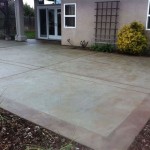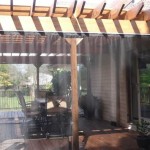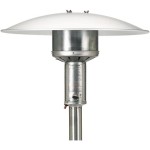How to Seal Concrete Patio Pavers
Concrete patio pavers offer an attractive and durable surface for outdoor living spaces. Their versatility in design, coupled with their relatively low maintenance requirements, makes them a popular choice for homeowners. However, to maximize their lifespan and maintain their aesthetic appeal, sealing concrete patio pavers is a crucial step. This article provides a comprehensive guide on how to seal concrete patio pavers effectively.
Sealing pavers involves applying a protective coating that penetrates the porous surface of the concrete. This process creates a barrier against water, stains, UV damage, and other environmental factors. Proper sealing not only enhances the appearance of the pavers but also prevents deterioration, reducing the need for costly repairs or replacements in the future. Selecting the right type of sealer and applying it correctly are essential for achieving optimal results.
Before embarking on the sealing process, careful preparation is paramount. This includes thoroughly cleaning the pavers, allowing them to dry completely, and choosing the appropriate sealer for the specific type of concrete and desired finish. Neglecting these preparatory steps can compromise the effectiveness of the sealant and lead to unsatisfactory outcomes.
Key Point 1: Preparing the Pavers for Sealing
The foundation for a successful sealing job lies in thorough preparation. This encompasses cleaning, repairing, and ensuring the pavers are completely dry before applying the sealant. Rushing this phase can result in trapped dirt, moisture, or existing stains becoming sealed within the paver, diminishing the overall appearance and potentially leading to premature sealant failure.
The first step is to remove any loose debris, such as leaves, dirt, or sand, from the paver surface. A broom or leaf blower works effectively for this initial cleaning. Next, a more intensive cleaning is required to eliminate embedded dirt, stains, and efflorescence (the white, chalky deposit that can appear on concrete surfaces).
A pressure washer is a highly effective tool for this purpose. However, caution must be exercised to avoid damaging the pavers. Use a wide nozzle and a moderate pressure setting. Holding the nozzle too close to the pavers or using excessive pressure can etch the surface or dislodge the joint sand. Work systematically, overlapping each pass to ensure complete coverage.
For stubborn stains, such as oil or grease, a specialized concrete cleaner or degreaser may be necessary. Follow the manufacturer's instructions carefully, allowing the cleaner to dwell on the stain for the recommended time before rinsing thoroughly with water. For efflorescence, a dedicated efflorescence remover can be used. Again, adhere strictly to the product's instructions.
After cleaning, inspect the pavers for any cracks, chips, or other damage. Repair these imperfections before sealing. Small cracks can be filled with a concrete patching compound designed for paver applications. Follow the manufacturer's instructions for mixing and applying the compound. Allow the patch to cure completely before proceeding to the next step.
Once the pavers are clean and repaired, allow them to dry completely. This is a crucial step, as moisture trapped within the pavers can prevent the sealant from bonding properly. The drying time will vary depending on the climate and the porosity of the pavers. Generally, allow at least 24 to 48 hours of dry weather for thorough drying. Using a moisture meter can help to ascertain the moisture content within the pavers before sealing.
Finally, after the pavers being completely dry, it's recommended to sweep the pavers again just before applying the sealer to make sure there are no loose sands or debris on the surface. This ensures the sealer will adhere directly to the paver surface for maximum protection and longevity.
Key Point 2: Selecting the Right Type of Paver Sealer
Choosing the correct paver sealer is crucial for achieving the desired aesthetic and protective qualities. Various types of sealers are available, each with its own characteristics, advantages, and disadvantages. Broadly, paver sealers can be categorized into penetrating sealers and film-forming sealers.
Penetrating sealers, as the name suggests, penetrate the surface of the concrete pavers, forming a protective barrier within the material itself. These sealers typically do not alter the appearance of the pavers significantly, maintaining a natural look. They are breathable, allowing moisture vapor to escape, which helps prevent trapped moisture and potential damage from freeze-thaw cycles.
Silane and siloxane sealers are common types of penetrating sealers. They are effective at repelling water and preventing stains. They are generally easy to apply and offer good long-term protection. However, they may not enhance the color or sheen of the pavers significantly.
Film-forming sealers, on the other hand, create a visible layer or film on the surface of the pavers. These sealers can enhance the color and sheen of the pavers, providing a glossy or wet look. They offer excellent protection against stains, water penetration, and UV damage. However, they can be less breathable than penetrating sealers, potentially trapping moisture and causing issues in certain climates.
Acrylic sealers are a common type of film-forming sealer. They are relatively inexpensive and easy to apply. They provide a moderate level of protection and can enhance the color of the pavers. However, they may not be as durable as other types of sealers and may require more frequent reapplication.
Polyurethane sealers are another type of film-forming sealer. They offer superior durability and resistance to abrasion, chemicals, and UV damage. They provide a high-gloss finish and are ideal for high-traffic areas. However, they can be more expensive and more difficult to apply than acrylic sealers.
When selecting a paver sealer, consider the following factors: the type of concrete pavers, the desired aesthetic appearance, the climate, the level of traffic, and the budget. Read the manufacturer's specifications carefully and choose a sealer that is specifically designed for concrete pavers. Consider testing the sealer on a small, inconspicuous area of the patio before applying it to the entire surface to ensure it provides the desired results.
Key Point 3: Applying the Paver Sealer Correctly
The application process is critical for ensuring the paver sealer functions effectively and provides long-lasting protection. Follow the manufacturer's instructions meticulously, adhering to recommended application rates and drying times. Improper application can lead to uneven coverage, blistering, peeling, or other issues that compromise the sealant's performance and aesthetic appeal.
Before applying the sealer, ensure the pavers are clean, dry, and free of any debris. If applying a film-forming sealer, consider applying a primer coat first. A primer can improve adhesion and provide a more uniform finish. Apply the primer according to the manufacturer's instructions.
The sealer can be applied using a variety of methods, including a sprayer, roller, or brush. A sprayer is often the most efficient method for applying sealer to large areas. Use a low-pressure sprayer with a fan tip to ensure even coverage. A roller can be used for smaller areas or for applying thicker coats of sealer. Use a high-quality roller with a nap appropriate for the type of sealer being used. A brush can be used for detail work or for touching up areas that were missed by the sprayer or roller.
Apply the sealer in thin, even coats. Avoid applying too much sealer in one coat, as this can lead to runs, drips, or blistering. Overlapping each pass slightly to ensure complete coverage. Pay particular attention to the joints between the pavers, as these areas are more vulnerable to water penetration.
Allow the sealer to dry completely between coats, following the manufacturer's recommended drying time. The drying time will vary depending on the type of sealer, the temperature, and the humidity. Applying subsequent coats before the previous coat is fully dry can lead to problems with adhesion and appearance.
After applying the final coat of sealer, allow the pavers to cure completely before allowing foot traffic or placing furniture on the patio. The curing time will also vary depending on the type of sealer. Consult the manufacturer's instructions for specific curing times. While the sealer is curing, protect the patio from rain, sprinklers, and other sources of moisture.
Finally, remember that sealing pavers is not a one-time task. The sealer will eventually wear down over time, requiring reapplication. The frequency of reapplication will depend on the type of sealer, the level of traffic, and the climate. Inspect the pavers regularly for signs of deterioration, such as fading, staining, or water penetration. Reapply the sealer as needed to maintain the protection and appearance of the patio.
Sealing concrete patio pavers is an investment in their longevity and aesthetic appeal. By following these guidelines for preparation, selection, and application, homeowners can effectively protect their patios from the elements and enjoy their outdoor spaces for years to come.

How To Properly Seal Concrete Pavers Step By Guide Wilson S Landscaping

Advantages Of Applying Paver Sealer And Sand Lock Mckinnon Materials

How To Seal Concrete Pavers Why You Should

How To Seal Pavers For A Wet Look Brick Driveway Concrete

How To Seal Concrete Pavers Why You Should

Sealing Your Patio Pros And Cons

Paverarmor Penetrating Paver Sealer Long Lasting Protection

How To Apply Sealer Pavers

Cleaning And Sealing Concrete Pavers Process Gappsi Group

How To Seal A Patio By Yourself
Related Posts








